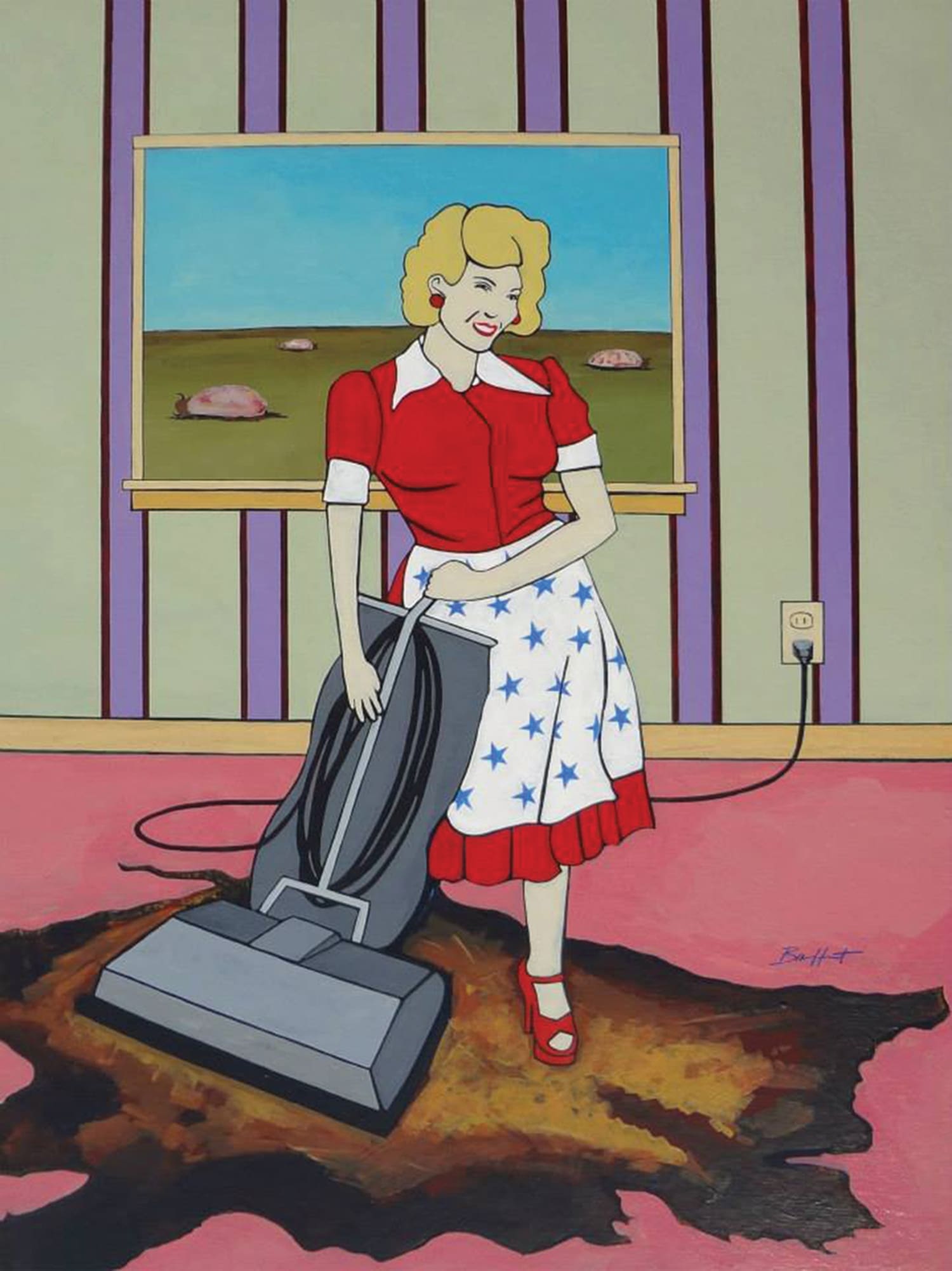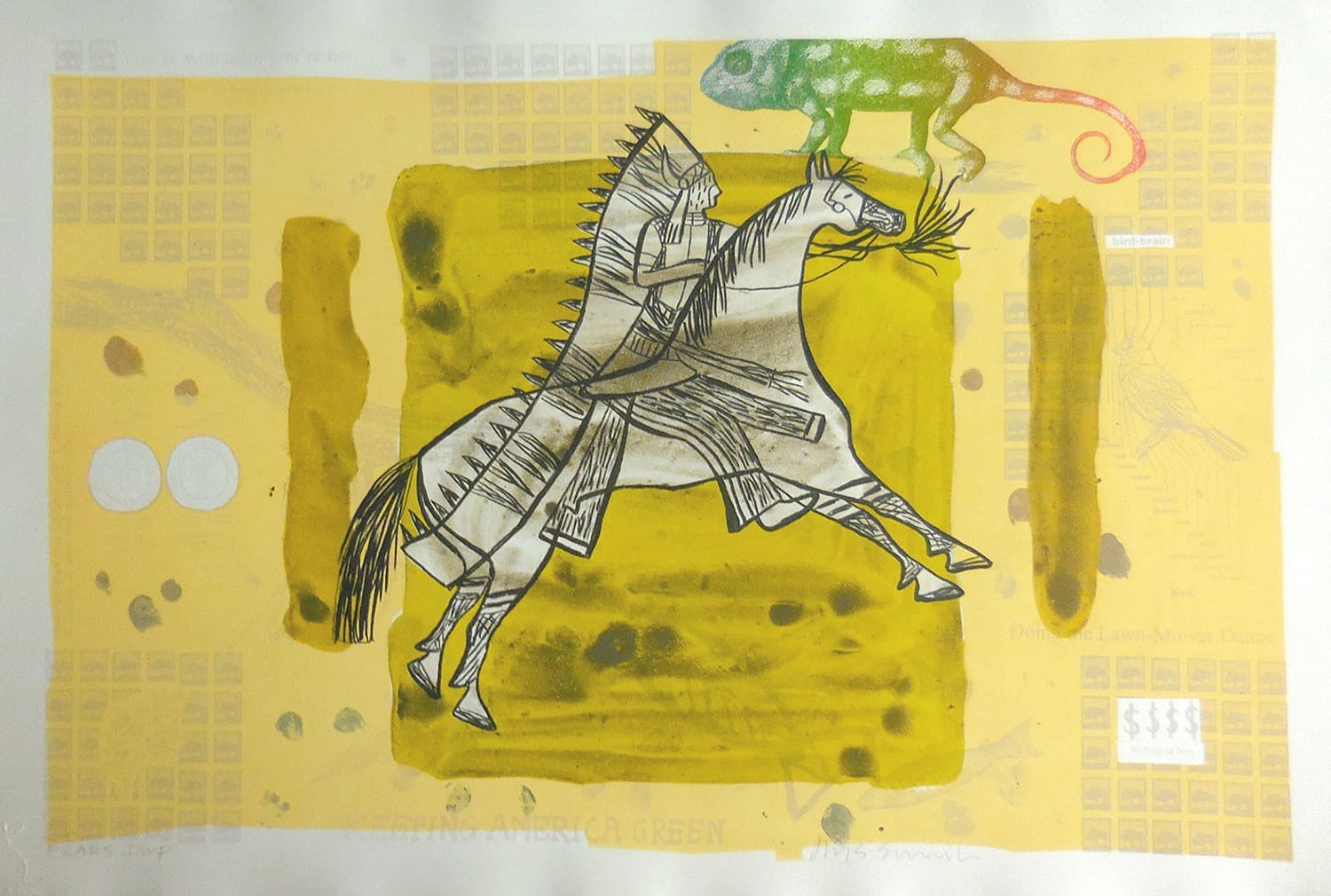The Buffalo in the American Living Room
Fritz Scholder (Luiseño / European, 1937 – 2005), was one of the 20th century’s most important and provocative artists. His abstracted figural style, iconoclastic imagery, and complicated legacy have influenced the work of several contemporary Northern Plains Native American artists, many of whom resist simple categorization, defy expectation, and navigate the duality of being Indigenous and a contemporary American artist. The Buffalo in the American Living Room: Fritz Scholder and Contemporary Native Art shares the work of Scholder along with several contemporary Native American artists. These artists’ humor, exploration of identity, and subversive subject matter channel Scholder’s radical spirit.
Born in Breckenridge, Minnesota in 1937, Fritz Scholder spent his early years living in Wahpeton, North Dakota, where his father worked for the Bureau of Indian Affairs. In 1950, Scholder‘s family relocated to Pierre, South Dakota, where Fritz’s high school art teacher was renowned Yanktonai Dakota artist Oscar Howe. He then moved to Sacramento, California with his family and he studied with Pop artist Wayne Thiebaud while earning an associate’s degree from Sacramento City College and a BA from Sacramento State College. He went on to receive an MFA from the University of Arizona and taught painting and contemporary art at the newly formed Institute of American Indian Arts (IAIA) in Santa Fe from 1964-69. While teaching at IAIA, Scholder began painting his “Indian series,” declaring he wanted to “paint the Indian real, not red.” This series would propel the artist into international fame, and his celebrity would grow throughout the 1970s. He moved to New York City in the 1980s and continued to work as an artist for the remainder of his life.
Scholder’s career spanned five decades, and he was the recipient of five honorary degrees and numerous awards. Throughout this career, Fritz Scholder subverted and reimagined mainstream depictions of Native Americans, helping lay the groundwork for future artistic innovations.
Ongoing Exhibitions
Convergence:
Hope, Love, Resilience, Rest, Community
This installation was created specifically for the atrium at Plains Art Museum as part of the exhibition Convergence: Health & Creativity. Inspired by Labovitz’s research on the psychological benefits of art, this piece celebrates the connection between art and well-being.
View ExhibitionS.P.A.C.E. 2024-2026
The S.P.A.C.E. (Sculpture Pad Art Collaborative Experiment) project is a public art initiative led by Plains Art Museum in collaboration with NDSU, MSUM, and Concordia College. Sculptures are displayed for two years.
View ExhibitionNo Time For Despair
To say that right now is the ideal time to make art that speaks directly to the people about social justice is an understatement. Because the very nature of art is to undertake or assume the role of a healer by shading light on the human condition.
View ExhibitionBee in Flight
Community artist and school art teacher MeLissa Kossick, who guides youth classes at the Museum on art, gardens, and pollinators, has created an enchanting mosaic design in the Creativity Pathway in the Serkland Gallery called Bee in Flight.
View ExhibitionFragile Preservation
A Tallgrass Community
While the Tallgrass Prairie is a community made up of a great diversity of species, Fragile Preservation represents a selection of them.
View Exhibition

